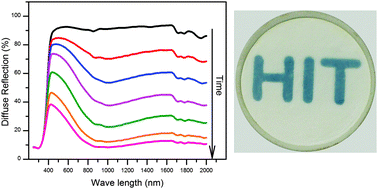Hydrogen photochromism in Nb2O5 powders
Abstract
In this paper, we report on the hydrogen photochromism in Nb2O5 powders with different structures. Four different powder phases were prepared by calcining Nb2O5·nH2O powders at various temperatures, and their morphology, structure, and electronic band structure were characterized by scanning electron microscopy, structural analyses, thermogravimetric analysis, differential scanning calorimetry, and optical spectroscopy. Nb2O5 powders with different structures and very different properties were formed after different high-temperature treatments of the polymorphous oxide. A pronounced photochromic effect was observed in the M and H phases of Nb2O5, whereas the other phases exhibited poor photochromic responses. Because photochromism arises due to the detachment of hydrogen atoms under the action of light from hydrogen donor molecules previously adsorbed on the oxide surface, the electronic band structure and the morphology have strong influences on the photochromic properties of Nb2O5 powders. For these reasons, a pronounced photochromic effect was achieved in the H phase.


 Please wait while we load your content...
Please wait while we load your content...